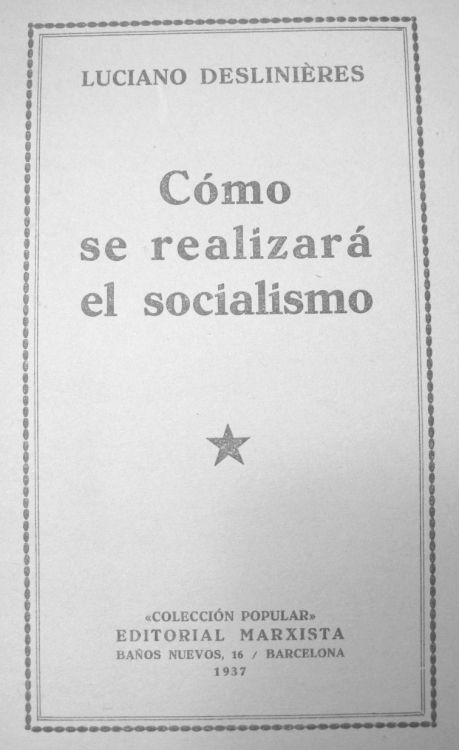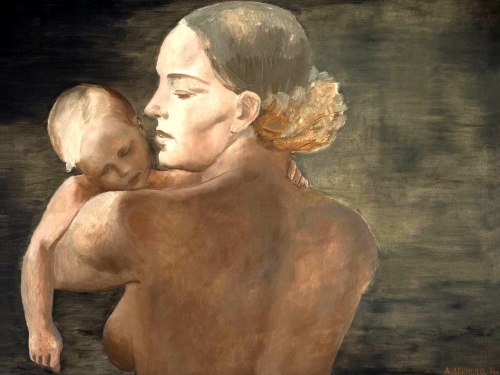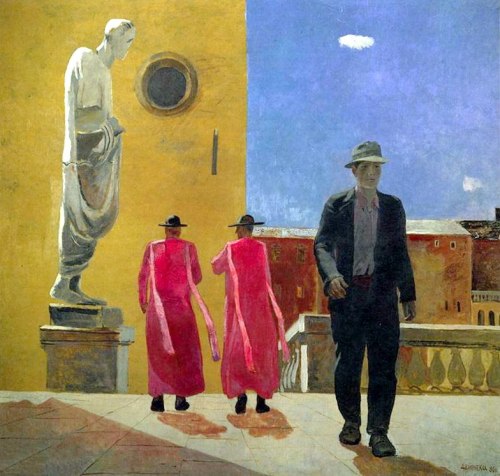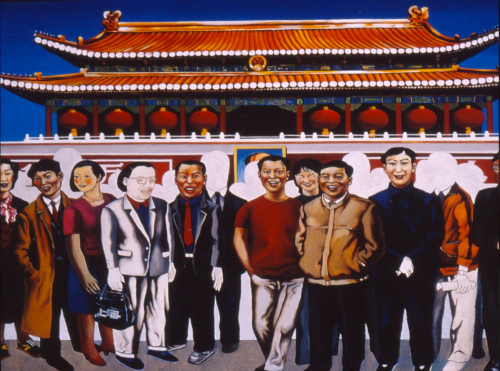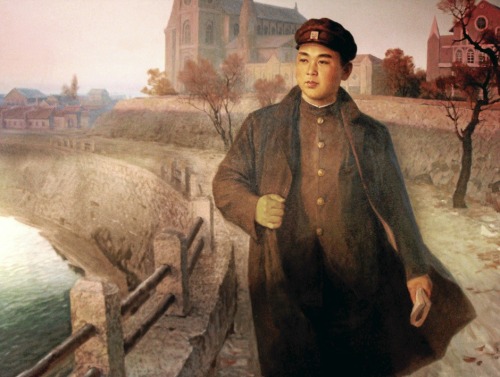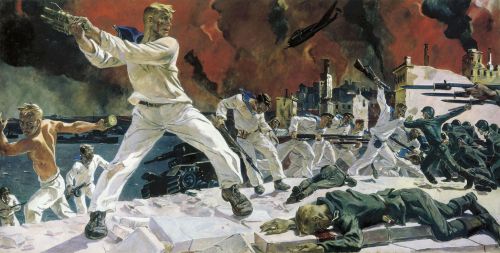#socialist realism
This Spanish translation of Lucian Deslinières Comment se réalisera le socialisme (1919) is from 1937. The publisher, Editorial Marxista, was founded in 1936 by the P.O.U.M (Partido Obrero de Unificación Marxista), one of the many factions in the Spanish Civil War. Editorial Marxista would last only 11 months but was prolific in its short life, producing dozens of Marxist classics and more than fifty different pamphlets, many of which were translations - like this one. In June of 1937, the Communist police seized the offices of the POUM and Editorial Marxista, destroying any EM material they found. Those items that remain have historical as well as intellectual value to historians of the Spanish Civil War and Marxist intellectual thought.
Newberry call number: Wing ZP 940 .E49
Post link
Isaak Brodskiy. Vladimir Lenin at the Rally of Putilov Plant Workers in May 1917.
1929. State Historical Museum, Moscow.
In February 1917 strikes at the factory contributed to setting in motion the chain of events which led to the February Revolution. In 10 March 1919 at protest rally in the factory striking workers condemned the Bolshevik government in a resolution claiming “…the Bolshevik government is not the authority of the proletariat and peasants, but the authority of the dictatorship of the Central Committee of the Communist Party…”. When Lenin came to Petrograd to give a speech on 13 March the workers demanded his resignation and when Zinoviev tried to address the workers he was greeted with shouts: “Down with the Jew!”. Strikers barricaded themselves in the factory which was stormed by the Cheka to suppress the strike and about 200 workers were executed.
After the October Revolution it was renamed Red Putilovite Plant (zavod Krasny Putilovets), famous for its manufacture of the first Soviet tractors, Fordzon-Putilovets, based on the Fordson tractor. The Putilov Plant was famous because of its revolutionary traditions. In the wake of Sergey Kirov’s 1934 assassination, the plant was renamed Kirov Factory No. 100.
You may find more information about the factory here.
Post link




Layer by layer breakdown of my recent illustration, please like and reblog, I overwhelmingly draw original content and thus it is really hard for my art to find an audience.
Разбор по слоям последней нарисованой мною иллюстрацией

Drew a bit more into this wip, I am finally getting a proper table tomorrow- I’ve been drawing on a low table for nearly a month and it’s been killing my back
Please like, reblog and check the rest of my art out
Tiananmen Gate
Painting #1 Dong Xiwen, The Founding of the Nation, 1952. This painting is of Mao’s first address to the people in 1949.
Painting #2 Sun Zixi, In Front of Tiananmen, 1964. In this painting the “types” of Chinese citizens visit Tiananmen. Mao’s portrait is of central focus.
Painting #3 Wang Jinsong, Taking a Picture in Front of Tiananmen, 1990. Just of 40 years later “type" of Chinese citizens visit Tiananmen. Now however, Mao’s presence is obscured and less important. What’s interesting is the site and its function are almost unchanged.
Gates and walls were two principal features of a capital in traditional China because they both shaped a city and made it meaningful. Without much difficulty historians have traced this design back to China’s antiquity. Although such an unbroken tradition in city planning may be admirable, one wonders why a culture would so insistently reject any fundamental change. In particular, what did these gates and walls mean and why did they become an imperial obsession?
Perhaps the only logical explanation for this obsession was a political tenet that power could be maintained only by keeping it secret. The walls were layers of barriers that repeatedly separated the "inner” from the “outer” and the gates led to (but did not display) something deep inside the labyrinth. The “thing” concealed behind the walls and gates was precisely the emperor.
“The Way of the ruler lies in what cannot be seen, its function in what cannot be known. Be empty, still, and idle, and from your place of darkness observe the defects of others. See but do not appear to see; listen but do not seem to listen; know but do not let it be known that you know …. Hide your tracks, conceal your sources, so that your subordi-nates cannot trace the springs of your action. Discard wisdom, forswear ability, so that your subordinates cannot guess what you are about. Stick to your objective and examine the results to see how they match; take hold of the handles of government carefully and grip them tightly. Destroy all hope, smash all intention of wresting them from you, allow no man to covet them.”
This old architectural symbolism, however, collapsed (at least on the surface) when Mao appeared above Tiananmen on 1 October 1949. To the thousands gathered outside the gate, it meant that the hidden power had finally emerged and submitted itself to them. No other gesture could more effectively prove the newness of the Communist leadership, and no other act could more convincingly seal the title of People’s Republic. To become a monument, Tiananmen had to be isolated and extracted from its traditional context. This process first took place on a symbolic level: after 1949 the Gate became an emblem. Once the building stood as an individual entity, its monumental form became analogous with the new ruling power and ruling figure. Both the Gate and Chairman Mao were primary symbols of new China, they were naturally equated. A huge portrait of Mao was installed on the Gate and was updated year after year.
Post link
The Kim’s in Socialist Realism
The first painting is Kim Il Sung (1912 – 1994) "Receiving from his mother the gun that his father used for independence fighting.“
The second painting is Kim Jong Suk (1917 – 1949) who would become Kim Il Sung’s wife and Kim Jung Il’s mother. It is entitled "Doing her duty by putting up anti-Japanese messages on a building”
This is her again in the third picture. This painting is her “Studying Kim Il Sung’s communist ideology”. Her children sleep beside her.
The fourth is Kim Jung Il (1941 -2011) here he greets his people under a statute of his father.
Last is Kim Jung Un (1983 or 1084) It appears to be depicting his education in Switzerland.
Post link


